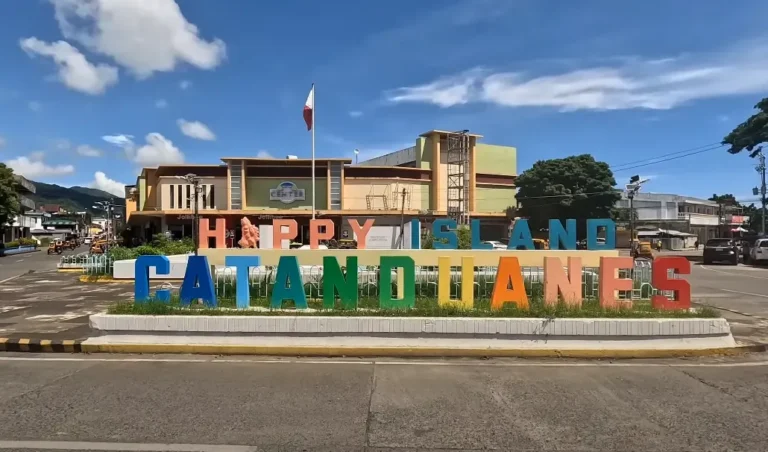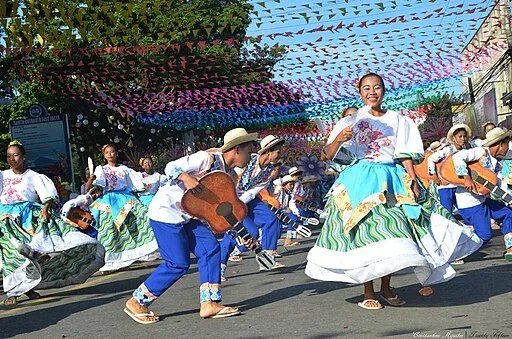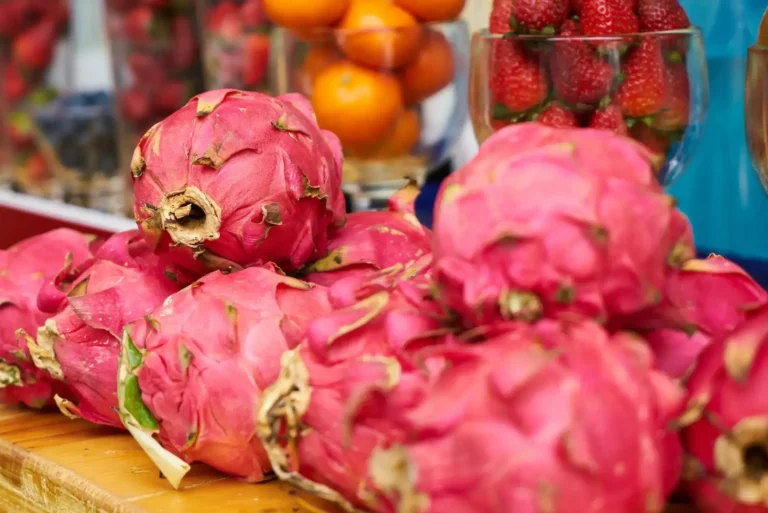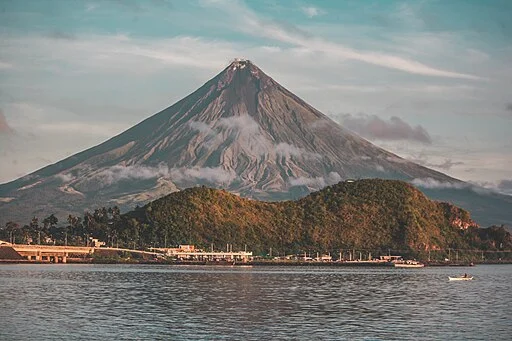Kadaugan Sa Mactan Festival Philippines
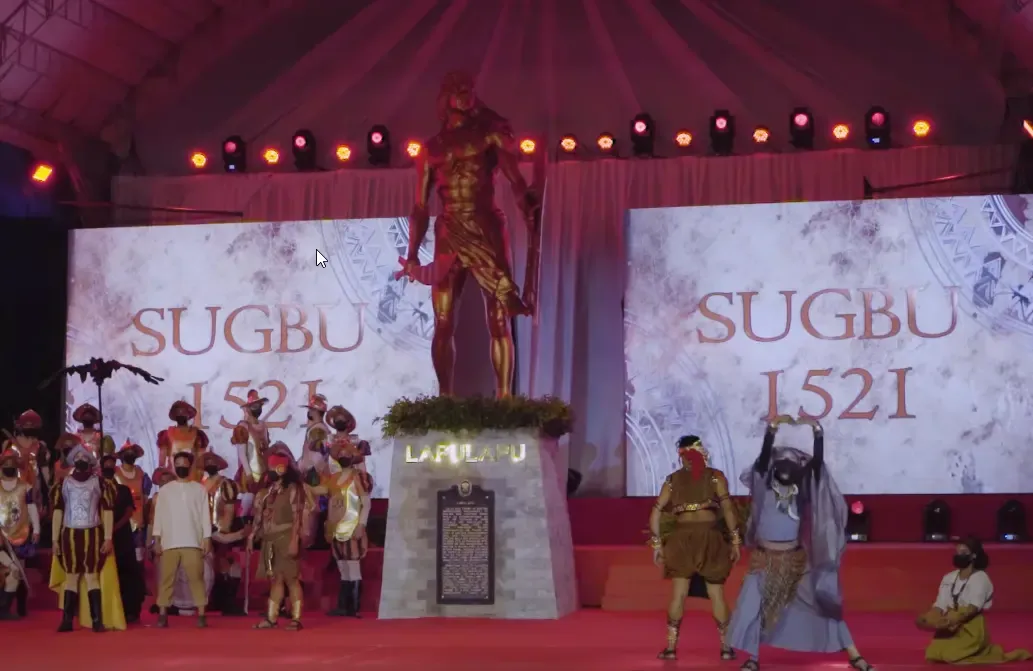
Every April 27th, the Filipino people unite to commemorate a remarkable historical event that occurred centuries ago. The festival, known as “Victory in Mactan,” is a tribute to the courageous chieftain Lapu-Lapu and his triumphant defeat of the renowned explorer Ferdinand Magellan.
Prepare to be transported to a fascinating world of history and culture as we delve into the significance of this festival. Join us as we discuss the re-enactment of the legendary battle at the Beach of Barangay in Lapu-Lapu City, the very place where this epic encounter unfolded.
Marvel at the actors and actresses who breathe life into the main characters of this historical event, while majestic canoes lead a grand procession reminiscent of Magellan’s ships.
Continue reading to discover the rich heritage and indomitable spirit of the Filipino people.
Key Takeaways
- The Kadaugan Sa Mactan Festival celebrates the victory of Lapu-Lapu over Ferdinand Magellan in 1521.
- The festival promotes tourism and preserves the historical significance of the Battle of Mactan.
- The festival showcases traditional dances, music, and costumes that reflect the rich cultural heritage of the Philippines.
- Visitors can indulge in the diverse flavors of Filipino cuisine and sample traditional dishes and desserts.
Facts About Kadaugan Sa Mactan Festival
| Facts | Explanation |
|---|---|
| Festival Name | Kadaugan Sa Mactan Festival |
| Type of Festival | Cultural Festival |
| Festival Etymology | Kadaugan Sa Mactan is a Cebuano phrase that translates to “Victory in Mactan” in English. The festival commemorates the historic Battle of Mactan, where the indigenous chieftain Lapu-Lapu and his warriors successfully defended the island against Spanish forces led by Ferdinand Magellan. |
| First Celebrated | April 27, 1992 |
| Founder | City Government of Lapu-Lapu |
| Brief History of the Festival | The Kadaugan Sa Mactan Festival was established in 1992 to honor the heroism of Lapu-Lapu and his victory over Magellan. It serves as a reminder of the rich cultural heritage and bravery of the people of Mactan. The festival features various activities and events that showcase the local traditions, arts, and history, including street dances, reenactments of the Battle of Mactan, parades, beauty pageants, and cultural performances. It has become a significant event that attracts both locals and tourists from around the world, promoting cultural appreciation and tourism in the region. |
| Brief History of the City | Lapu-Lapu City, located in the province of Cebu in the Philippines, is named after the great chieftain Lapu-Lapu. It is known for its historical significance as the site of the Battle of Mactan. The city offers beautiful beaches, vibrant markets, and a rich cultural heritage. It is also home to several important historical landmarks, including the Magellan Shrine and the Mactan Shrine. Lapu-Lapu City is a popular tourist destination in the Philippines, attracting visitors with its natural beauty and historical importance. |
| Ethnic Information | The majority of the population in Lapu-Lapu City belongs to the Cebuano ethnic group, which is one of the largest ethnic groups in the Philippines. The Cebuanos have their own distinct language, traditions, and cultural practices that are showcased during the Kadaugan Sa Mactan Festival. Other ethnic groups in the city include Tagalogs, Visayans, and other indigenous peoples. |
| Location | Lapu-Lapu City is located on Mactan Island, which is part of the province of Cebu in the Central Visayas region of the Philippines. It is situated in the eastern portion of Cebu Island, bordered by the Bohol Sea to the east. |
| How to Reach | The most convenient way to reach Lapu-Lapu City is by flying to Mactan-Cebu International Airport, which serves both domestic and international flights. From the airport, you can take a taxi or ride-sharing service to reach your desired destination within the city. |
| Nearby Cities/Towns | The majority of the population in Lapu-Lapu City belongs to the Cebuano ethnic group, which is one of the largest ethnic groups in the Philippines. The Cebuanos have their distinct language, traditions, and cultural practices that are showcased during the Kadaugan Sa Mactan Festival. Other ethnic groups in the city include Tagalogs, Visayans, and other indigenous peoples. |
| Google Map Link | Lapu-Lapu City Location |
| Festival Main Events | – Street Dances – Battle of Mactan Reenactment – Parades – Beauty Pageants – Cultural Performances |
| Other Tourist Attractions | – Magellan Shrine – Mactan Shrine – Olango Island Wildlife Sanctuary – Nalusuan Island Marine Sanctuary – Shangri-La’s Mactan Resort & Spa – Mactan Newtown Beach – Lapu-Lapu City Public Market – Marina Mall Cebu – Alegre Guitar Factory – The Jungle Cultural Entertainment Center – Island Central Mactan – Mactan Island Aquarium – Mactan-Mandaue Bridge – Cebu Happy World Museum – Cebu Yacht Club – Tambuli Beach Club East Wing |
| Famous Food Dishes | – Lechon (Roast Pig) – Danggit (Dried Fish) – Puso (Rice wrapped in coconut leaves) – Inasal na Manok (Grilled Chicken) – Budbud (Sticky Rice with Chocolate) – SuTuKil (Sugba, Tula, Kilaw – a combination of grilled, stewed, and raw seafood) |
| Landmarks | – Magellan Shrine: Commemorates the spot where Ferdinand Magellan was killed during the Battle of Mactan. – Mactan Shrine: A monument dedicated to Lapu-Lapu, showcasing his heroic stance against Magellan’s forces. – Mactan-Mandaue Bridge: A bridge connecting Lapu-Lapu City to neighboring Mandaue City. – Cebu Yacht Club: A prominent marina and yacht club located in Lapu-Lapu City. – Alegre Guitar Factory: Known for producing high-quality guitars using traditional craftsmanship techniques. – Olango Island Wildlife Sanctuary: A protected area known for its diverse bird species and natural beauty. |
| Related Festivals | – Sinulog Festival (Cebu City) – Panagbenga Festival (Baguio City) |
Brief History of Kadaugan sa Mactan Festival
The celebration of “Kadaugan sa Mactan” holds great historical significance in the Philippines. It commemorates the Battle of Mactan, which took place on April 27, 1521, between local chieftain Lapulapu and the Spanish forces led by Portuguese colonizer Ferdinand Magellan. This battle resulted in Lapulapu’s victory and the death of Magellan.
The Battle of Mactan had a profound impact on Philippine history. It halted the colonization of the Philippine archipelago for over forty years and is considered a significant event in the history of globalization. The battle symbolizes the resistance of the indigenous people against foreign colonization.
To honor this historical event, the Philippine government designated April 27 as a special public working holiday nationwide and a special non-working holiday in Lapu-Lapu City through Republic Act No. 11040. This law also established the day as “Lapu-Lapu Day” or “Adlaw ni Lapu-Lapu.”
“Kadaugan sa Mactan,” organized by the City Government of Lapu-Lapu, is an annual celebration that re-enacts the Battle of Mactan. It features a street theater performance depicting the historical battle and has evolved over the years to include the participation of celebrities, politicians, models, beauty queens, and sports icons in historical roles.
What Type of Festival is This
The Kadaugan Sa Mactan Festival in the Philippines is an annual celebration that showcases the rich cultural heritage and historical significance of the Battle of Mactan.
This festival is a unique and vibrant cultural celebration that brings together locals and tourists alike to commemorate the victory of Lapu-Lapu, a Filipino chieftain, over the Spanish explorer Ferdinand Magellan in 1521.
During the Kadaugan Sa Mactan Festival, the streets come alive with colorful parades, traditional dances, and music performances. You can immerse yourself in the lively atmosphere and witness the reenactment of the battle, which serves as a reminder of the bravery and resilience of the Filipino people.
In addition to the historical aspect, the festival also highlights the cultural diversity of the Philippines through various activities, such as culinary showcases, arts and crafts exhibitions, and traditional games.
It is an opportunity to experience the vibrant traditions and customs of the local communities, making it a must-visit event for anyone seeking a deeper understanding of Filipino culture.
Ethnic Information of Mactan
Mactan is an island located in the Central Visayas region of the Philippines, and it is part of Cebu Province. The ethnic makeup of Mactan, like much of Cebu, is predominantly composed of Cebuanos, who are a subgroup of Visayans. The Visayans are one of the largest ethnic groups in the Philippines. The primary language spoken on Mactan Island is Cebuano (also known as Bisaya or Visayan).
Other ethnic groups in the Philippines such as Tagalogs, Ilocanos, and people from other provinces have also migrated to Mactan, especially given its urbanization and the presence of industries and tourism. Additionally, there is a presence of expatriates and foreign residents from various countries due to the island’s resorts and economic opportunities.
The cultural heritage of Mactan also features a mix of influences from the pre-colonial era, Spanish colonization, the American period, and recent global trends due to globalization and modernization.
Festival Etymology
The festival’s name, “Kadaugan Sa Mactan,” translates to “Victory at Mactan” in English.
This name is significant because it commemorates the historic Battle of Mactan, which took place on April 27, 1521. During this battle, the native chieftain Lapu-Lapu, and his warriors successfully defended the island of Mactan against the invading Spanish forces led by Ferdinand Magellan.
The Kadaugan Sa Mactan Festival celebrates this victory through various activities and events, including a reenactment of the battle. By understanding the festival’s etymology, you gain insight into the historical significance and importance of the Kadaugan Sa Mactan Festival in the Philippines.
Brief History Of The City Of Mactan
The city of Mactan is located in the Central Visayas region of the Philippines and is part of the Cebu Metropolitan Area. Mactan is an island that lies a few kilometers to the southeast of Cebu Island and is connected to Cebu by the Marcelo Fernan Bridge and the Mactan-Mandaue Bridge.
One of the notable historical figures in Mactan’s history is Lapu-Lapu, a brave warrior and chieftain.
He played a pivotal role in the Battle of Mactan, which took place on April 27, 1521. This battle was significant as it marked the first recorded resistance of Filipinos against Spanish colonization.
Lapu-Lapu, along with his warriors, fought against the expedition led by Portuguese explorer Ferdinand Magellan. Despite being outnumbered and outarmed, Lapu-Lapu’s forces successfully defended Mactan, resulting in Magellan’s death.
This event is commemorated every year during the Kadaugan sa Mactan Festival, honoring Lapu-Lapu’s heroism and the city’s historical significance.
Early Settlements
Before the arrival of the Spanish colonizers, Mactan was already inhabited by indigenous communities. The island was home to the Cebuano-speaking people, who lived in small villages and engaged in fishing and agriculture.
These early settlers had a complex social structure and were ruled by local chieftains.
The Arrival of The Spanish
In 1521, the Portuguese explorer Ferdinand Magellan arrived in Mactan during his expedition to find a western route to the Spice Islands.
He was welcomed by Rajah Humabon, the chieftain of Cebu, who converted to Christianity along with his subjects. However, not all of the indigenous people were supportive of the Spanish presence.
Battle of Mactan
The Battle of Mactan is a historic event that took place on April 27, 1521, in what is now Lapu-Lapu City, Cebu, Philippines. It was a significant battle between the native chieftain Lapulapu and the Spanish forces led by Portuguese explorer Ferdinand Magellan. The battle resulted in the victory of Lapulapu and the defeat of Magellan, ultimately halting the Spanish colonization of the Philippine archipelago for over forty years.
Magellan’s expedition aimed to establish a trading route for spices to the Moluccas and arrived in Cebu after establishing relations with local leaders. However, Lapulapu, a rival chieftain, refused to submit to Spanish rule and sought Magellan’s aid against him. Despite offers for peace and reinforcements, Lapulapu remained steadfast in his resistance.
On the morning of April 27, 1521, Magellan and a small group of men engaged in battle with Lapulapu’s army. Outnumbered and at a disadvantage due to the receding tide, the Spanish forces were overwhelmed. Magellan himself was struck with a poisoned arrow and faced multiple injuries before his death. The battle resulted in the loss of eight Spaniards and four native Christians, while Lapulapu’s side suffered only fifteen casualties.
Lapulapu, regarded as the first Filipino national hero, did not personally join the battle but provided strategic guidance from a distance. He refused to surrender the remains of the slain Spaniards in exchange for rewards, adding to his legendary status. The Battle of Mactan has since been recognized as a symbol of Filipino resistance against foreign colonization.
Spanish Colonization
After Magellan’s death, the Spanish continued their efforts to colonize the Philippines. In 1565, Miguel López de Legazpi arrived in Cebu and established the first Spanish settlement in the country.
Mactan became an important trading center under Spanish rule, with goods such as pearls, tortoise shells, and agricultural products being exported to other parts of Southeast Asia.
World War II
During World War II, Mactan played a significant role in the defense of the Philippines against Japanese forces. It served as a base for American and Filipino troops and was heavily bombed during the Battle of Mactan in 1945.
After the war, Mactan gradually recovered and became a popular tourist destination due to its natural beauty and historical significance.
Modern Development
In recent years, Mactan has undergone rapid development and has become a hub for tourism and economic activities.
The construction of the Mactan-Cebu International Airport has boosted travel and trade in the region, attracting both domestic and international visitors. The island is also known for its world-class resorts, diving spots, and water sports facilities.
Cultural Heritage
Mactan is proud of its cultural heritage, and traditional practices and customs are still observed by its residents. The island is known for its vibrant festivals, such as the Kadaugan sa Mactan, which commemorates Lapu-Lapu’s victory against Magellan.
Local handicrafts, particularly guitar-making and basket-weaving, are also important cultural expressions that showcase Mactan’s artistry.
The history of Mactan is a testament to the resilience and bravery of its people. From being an indigenous settlement to a battleground against foreign invaders, Mactan has emerged as a thriving destination that celebrates its past while embracing progress.
Whether you are interested in history, nature, or simply relaxation, Mactan offers a blend of experiences that will leave you with a deeper appreciation for this remarkable island.
The Life Story of Lapu-Lapu
Lapu-Lapu, also known as Rajah Lapu-Lapu, was a prominent figure in Philippine history. He is best known for his resistance against Spanish colonization and his victory in the Battle of Mactan.
- Born around the 1490s on the island of Mactan, Lapu-Lapu was a chieftain of the native people known as the Cebuanos. He was known for his bravery, leadership, and commitment to protecting his people from foreign invaders.
- In 1521, when the Portuguese explorer Ferdinand Magellan arrived in the Philippines, he sought to convert the natives to Christianity and establish Spanish rule. However, Lapu-Lapu fiercely resisted this colonization attempt. On April 27, 1521, the Battle of Mactan took place between Lapu-Lapu’s forces and Magellan’s troops.
- Despite being outnumbered and lacking advanced weaponry, Lapu-Lapu and his warriors successfully repelled the Spanish forces. During the battle, Magellan was killed, making Lapu-Lapu a symbol of resistance against foreign domination.
- Lapu-Lapu’s victory in the Battle of Mactan marked the first recorded resistance of the indigenous people against European colonization in the Philippines. His bravery and determination continue to inspire Filipinos to this day.
Lapu-Lapu’s life beyond the Battle of Mactan is not well-documented. However, his legacy as a national hero and symbol of Filipino resistance remains significant. Today, Lapu-Lapu is honored with a statue in Mactan Island and is remembered as a valiant defender of Filipino independence and identity.
Location of the City Of Mactan In The Country
The City of Mactan is located in the Philippines, within the province of Cebu. It is part of the Cebu Metropolitan Area and is situated on Mactan Island, which lies a few kilometers to the southeast of Cebu Island across the Mactan Channel. Mactan is known for its historic sites, resorts, and its proximity to Cebu City.
Here is a table to give you a better idea of Mactan’s location within the Philippines:
| Region | Province | City/Municipality |
|---|---|---|
| Central Visayas | Cebu | Mactan |
Mactan is famous for its historical landmark, the Mactan Shrine, which commemorates the Battle of Mactan, where the native chieftain Lapu-Lapu defeated the Spanish conquistador Ferdinand Magellan.
The city’s proximity to beautiful beaches and crystal-clear waters also makes it a popular destination for beach lovers and water sports enthusiasts.
How to Reach The City Of Mactan, Cebu
Getting to the city of Mactan is easy and convenient. Whether you’re coming from within the Philippines or from abroad, here are three ways to reach this vibrant city:
By Air:
The primary way to reach the city of Mactan in Cebu is by air. Mactan is home to the Mactan-Cebu International Airport (MCIA), which is the second busiest airport in the Philippines. It has both domestic and international flights.
- From Manila: There are multiple daily flights from Ninoy Aquino International Airport (NAIA) to MCIA.
- From Other Countries: Direct international flights are available from various cities such as Singapore, Hong Kong, Tokyo, Seoul, Dubai, and others.
By Sea:
Mactan is an island connected by two bridges to Cebu’s mainland. You can take a ferry to Cebu City from various ports in the Philippines and then travel by road to Mactan.
By Land:
Once in Cebu City, you can reach Mactan Island:
- By Taxi: Taxis are readily available and can take you across the Marcelo Fernan Bridge or the Mandaue-Mactan Bridge to the island.
- By Bus: Buses and minibusses run regularly from Cebu City to different parts of Mactan.
- By Jeepney: Jeepneys also have routes that connect Cebu City with Mactan.
By Private Car:
If you have rented a car or are using a private vehicle, simply drive across one of the two bridges that connect Mactan with the main island of Cebu.
To help you plan your trip, here’s a table showing the distances from popular tourist attractions in Cebu to the city center of Mactan:
| Attractions | Distance (in km) |
|---|---|
| Lapu-Lapu Monument | 3.5 |
| Mactan Shrine | 4.2 |
| Magellan’s Cross | 17.2 |
| Fort San Pedro | 18.8 |
| Taoist Temple | 20.1 |
Mactan City is a bustling hub that offers a perfect blend of history, culture, and natural beauty. With its multiple transport options, you can easily explore the city and its surrounding attractions. So pack your bags and get ready to experience the vibrant tourism scene in Cebu!
Nearby Cities or Towns & Their Distance
To locate nearby cities or towns and their distance in km and time, refer to the following information. Here is a table showing the distance and travel time from Mactan City to some nearby cities and towns:
| City/Town | Distance (km) | Travel Time |
|---|---|---|
| Cebu City | 19 | 30 minutes |
| Lapu-Lapu City | 5 | 10 minutes |
| Talisay City | 25 | 40 minutes |
| Carcar City | 55 | 1 hour |
| Danao City | 30 | 50 minutes |
Now that you know the distance and travel time, you can plan your itinerary accordingly.
Whether you want to visit the historical Magellan’s Cross in Cebu City or witness the exciting historical reenactment during the Kadaugan Sa Mactan Festival, knowing the proximity of these nearby cities and towns will be helpful.
Festival main events and activities
For festival-goers, the Kadaugan Sa Mactan Festival in the Philippines offers a wide range of engaging events and activities to enjoy. Here are three main events and activities that you can look forward to:
- Street Dancing Competition: Watch as colorful and vibrant street performers showcase their talent and skill through music and dance. Experience the energy and excitement as they bring the streets of Mactan to life with their lively performances.
- Battle of Mactan Reenactment: Witness a historical reenactment of the Battle of Mactan, where the great Filipino hero Lapu-Lapu defeated the Spanish forces led by Ferdinand Magellan. Immerse yourself in the rich history and culture of the Philippines as you watch this epic battle unfold.
- Food and Trade Fair: Indulge in a gastronomic adventure as you explore the food and trade fair. Sample delicious local delicacies and discover unique products made by local artisans. From traditional Filipino dishes to handmade crafts, there’s something for everyone to enjoy.
With these exciting events and activities, the Kadaugan Sa Mactan Festival promises to be a memorable and enjoyable experience for all festival-goers.
Popular Food Dishes of The City
As a festival-goer at the Kadaugan Sa Mactan Festival in the Philippines, you’ll have the opportunity to savor the popular food dishes of the city. The festival not only showcases the rich history and culture of Mactan but also offers a delightful culinary experience. Here are three must-try dishes that will surely tantalize your taste buds:
- Lechon: This mouthwatering roasted pig is a staple in Filipino celebrations. The crispy skin and tender meat make it a crowd favorite.
- Danggit: A popular dried fish delicacy, danggit is often served for breakfast. Its savory flavor and crispy texture make it a perfect pairing with garlic rice and vinegar.
- Puso: Also known as hanging rice, puso is a unique way of cooking rice wrapped in coconut leaves. It is a convenient and delicious meal on the go.
Indulge in these delectable dishes and experience the culinary delights of Mactan during the Kadaugan Sa Mactan Festival.
Famous Tourist Spots In The City
While enjoying the popular food dishes of the city at the Kadaugan Sa Mactan Festival, you’ll also want to explore the famous tourist spots in Mactan. Here are three must-visit destinations that will surely captivate you:
- Mactan Shrine – Immerse yourself in history by visiting the Mactan Shrine, a memorial park that commemorates the Battle of Mactan. This is where the brave Filipino chieftain Lapu-Lapu defeated the Portuguese explorer Ferdinand Magellan in 1521.
- Cebu Happy World Museum – Get ready for a unique and interactive experience at the Cebu Happy World Museum. This museum showcases 3D art installations, optical illusions, and colorful exhibits that are perfect for taking Instagram-worthy photos.
- Magellan’s Marker – Pay homage to the historic landing of Ferdinand Magellan by visiting Magellan’s Marker. This site marks the spot where Magellan planted a wooden cross upon his arrival in Mactan, symbolizing the introduction of Christianity in the Philippines.
Make sure to include these exciting destinations in your itinerary when visiting Mactan during the Kadaugan Sa Mactan Festival.
Famous Landmarks in the city
When exploring Mactan during the Kadaugan Sa Mactan Festival, you’ll frequently encounter famous landmarks that showcase the rich history and culture of the city. These landmarks not only serve as reminders of the past but also highlight the Cebuano heritage that is deeply ingrained in the city. Here are three famous landmarks in Mactan that you shouldn’t miss:
- Magellan Shrine: This iconic landmark commemorates the Battle of Mactan, where Lapu-Lapu, a native chieftain, defeated Ferdinand Magellan during his expedition to the Philippines in 1521.
- Lapu-Lapu Monument: Located in Punta Engaño, this monument honors Lapu-Lapu, the brave warrior who defended Mactan against foreign invaders. It stands tall as a symbol of Filipino bravery and independence.
- Mactan Shrine: A sprawling complex that includes a museum, a chapel, and a monument, the Mactan Shrine pays tribute to the historic Battle of Mactan. It offers visitors a glimpse into the past, allowing them to immerse themselves in the rich history of the city.
These landmarks are not only visually stunning but also provide a deeper understanding of Mactan’s significant role in Philippine history.
Related Festivals In The Same Region
Here are some related festivals that you should not miss:
| Festival Name | Location | Date |
|---|---|---|
| Sinulog Festival | Cebu City | January |
| Pintados Festival | Tacloban City | June |
| Panagbenga Festival | Baguio City | February |
| Kadayawan Festival | Davao City | August |
The Sinulog Festival in Cebu City is one of the most famous festivals in the Philippines, known for its grand street parade and religious processions.
The Pintados Festival in Tacloban City showcases the ancient tattooed warriors of the region and their rich cultural heritage.
The Panagbenga Festival in Baguio City celebrates the blooming of flowers with street dancing and float parades. Lastly, the Kadayawan Festival in Davao City is a week-long celebration of the city’s bountiful harvest and cultural diversity.
Final Thoughts
The Kadaugan Sa Mactan Festival in the Philippines is a vibrant celebration that commemorates the historic victory of Lapu-Lapu over Ferdinand Magellan in 1521.
This cultural festival showcases traditional music, dance, and cuisine, reflecting the rich ethnic tapestry of the Philippines. It also serves as a reminder of the pride and resilience of the Mactan community, promoting tourism and preserving the historical significance of the Battle of Mactan.
The festival features street dances, reenactments of the battle, parades, beauty pageants, and cultural performances, attracting both locals and tourists.
With its emphasis on cultural heritage and bravery, the festival offers a captivating experience for anyone seeking to delve into Filipino history and traditions.

